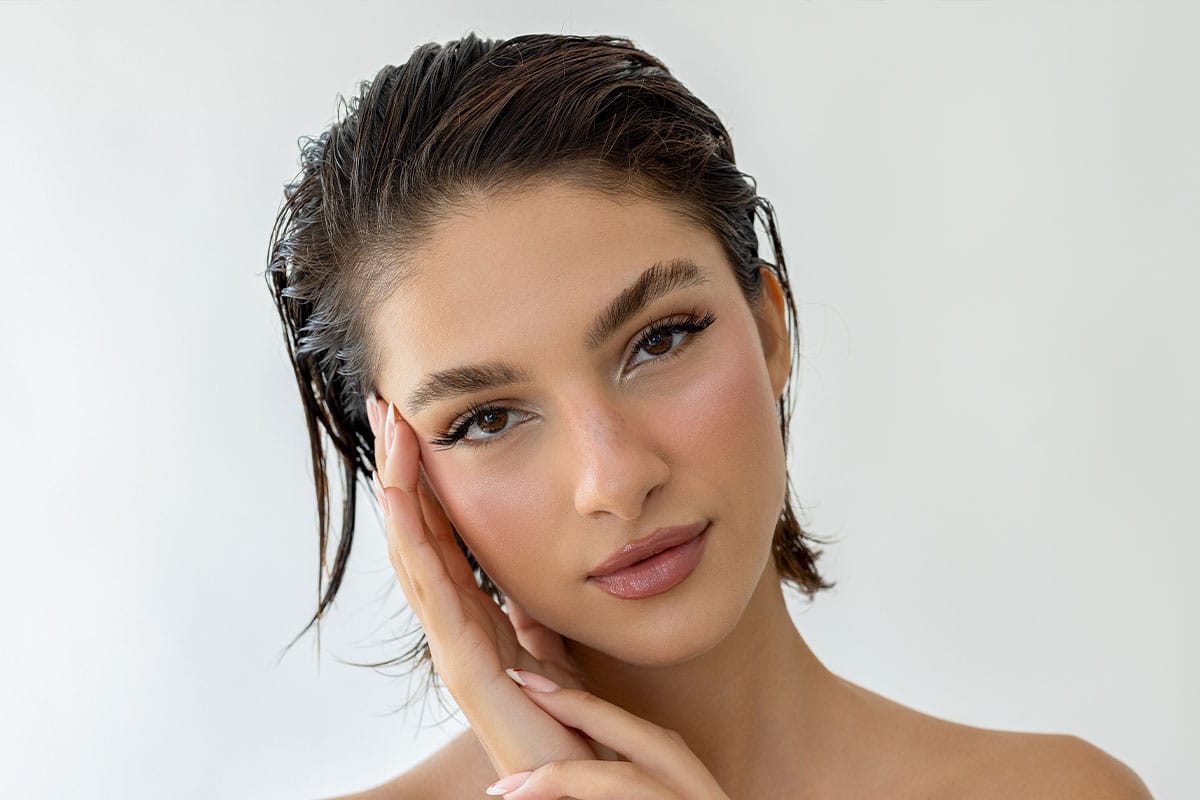Understanding laser blepharoplasty
Laser blepharoplasty is a precise eyelid procedure that uses a CO2 laser to refine excess skin, reposition or reduce fat pads, and restore definition to the upper and lower lids. By replacing a scalpel with laser energy, the surgeon can cut and coagulate simultaneously, improving visibility, reducing bleeding, and allowing meticulous control in delicate eyelid anatomy. The goal is a refreshed, natural-looking eye area that aligns with facial proportions rather than a surgically “done” appearance.
Eyes communicate health and attentiveness, and subtle changes can meaningfully enhance facial harmony. In sunny coastal communities like Gulf Shores, where light reflects off water and sand, patients often notice eyelid laxity, creasing, and under-eye shadows more prominently. At Southern Coastal Aesthetics, this approach integrates functional and aesthetic priorities, addressing hooding that can weigh on the lashes, softening lower-lid bags that cast shadows, and refining skin quality—all with an emphasis on safety, precision, and long-term tissue health.

Benefits and Value
The advantages of laser blepharoplasty begin with precision. Laser energy allows the surgeon to sculpt tissue in millimeter increments, follow the natural curvature of the lid, and preserve structures that support lid shape and function. This finesse creates smoother eyelid–cheek transitions, better upper-lid crease definition, and a rested, not altered, contour. Sealing small vessels as tissue is treated can also diminish bruising and swelling.
Faster Recovery and Refined Scarring
Recovery efficiency and scar quality are additional strengths. By controlling bleeding at the incision, lasers often cause less tissue trauma and can shorten downtime compared with traditional approaches. Upper-lid incisions are typically hidden in the natural crease, and lower-lid access can be placed inside the lid when appropriate, leaving no external scar. When helpful, the same platform can perform light resurfacing to refine fine lines and texture.
Long-Term Aesthetic and Functional Value
From a value standpoint, the benefits extend beyond the lids. Reducing upper-lid hooding can open the gaze and make features such as the brow and cheekbones appear more balanced. For those who prefer a durable solution over repeated temporary fixes, the procedure offers long-lasting correction that integrates naturally with the rest of the face. At Southern Coastal Aesthetics, Dr. Carrie L. Morris uses careful planning to align these benefits with your lifestyle and goals.
The Process
First, your journey begins with a comprehensive consultation and examination. The surgeon reviews your medical history, ocular health, and prior procedures while assessing eyelid skin quality, fat pad prominence, lid laxity, and brow position. High-resolution photographs support planning and enable a detailed discussion of desired changes. If dryness, allergies, or prior eye surgery are relevant, these factors are integrated into a tailored plan that safeguards comfort and function.
Customized Surgical Approach
Next, you’ll receive a clear explanation of the procedural approach. For upper lids, the plan may focus on removing redundant skin and precisely addressing medial or central fat to restore a clean crease. For lower lids, the surgeon may favor a transconjunctival approach, working from inside the lid to remove or reposition fat, followed by selective skin tightening or laser resurfacing to smooth creping. In cases with significant excess skin or laxity, a small external incision may be chosen to optimize support.
Day of Surgery
Then, on procedure day, local anesthesia with IV sedation is commonly used for comfort, though deeper sedation can be considered based on your needs. The laser creates precise incisions and provides immediate hemostasis for optimal visualization. Fat is conservatively sculpted or repositioned to avoid hollowness, and tissue is handled gently to preserve the eyelid’s natural support. If resurfacing is planned, parameters are adjusted to your skin type to balance smoothness with safe healing.
After the surgical steps are complete, fine sutures may be placed in the upper-lid crease and removed within days; a transconjunctival lower-lid approach requires no external sutures. Ointment and cooling are applied, and you receive detailed instructions on icing, head elevation, eye lubrication, and activity modification. Protective eyewear and strict sun care are emphasized, which is especially important for outdoor lifestyles along the Alabama coast.
Follow-Up and Ongoing Support
Finally, follow-up appointments monitor healing milestones. Early visits focus on comfort, suture removal if used, and eyelid shape. Subsequent check-ins address scar maturation, skin quality, and subtle refinements as swelling resolves. The team at Southern Coastal Aesthetics guides each phase so you know what to expect and how to support long-lasting results that look natural at conversational distance and in high-definition photos alike.

Considerations and Suitability
Not everyone requires the same approach, and a thoughtful evaluation determines whether this procedure is the right solution, a complementary procedure is advisable, or a non-surgical option better suits your goals. Ideal candidates typically have upper-lid hooding, lower-lid bags or shadows, and good ocular surface health. If brow descent is the main contributor to upper-lid heaviness, a brow lift may be discussed as an adjunct or alternative. Mild concerns may respond well to skin resurfacing or energy-based tightening alone, while structural issues often benefit from surgical correction.
Safety and Individualized Planning
Safety and predictability guide each recommendation. A history of dry eye, prior eyelid surgery, thyroid eye disease, or significant eyelid laxity requires special planning to protect comfort and lid position. Skin tone and thickness influence laser settings and resurfacing choices to avoid pigment changes and optimize texture. At Southern Coastal Aesthetics, candid conversations about risks—such as temporary dryness, swelling, bruising, transient asymmetry, or, less commonly, lid malposition—support informed decisions and set the stage for a smooth recovery.
Results and Outcomes
Results unfold in stages, and understanding the timeline helps you appreciate steady refinement. Initial swelling and mild bruising peak in the first 48 to 72 hours and begin to settle noticeably within a week. Many patients feel presentable for work or social settings by day seven to ten, often with a light application of makeup if approved by the surgeon. The early difference is a brighter, more open gaze, even as residual swelling continues to recede.
Progressive Refinement and Natural Results
Over the next four to six weeks, definition continues to improve as tissues soften and the lid–cheek junction smooths. Fine lines and skin texture benefit from any resurfacing performed, with visible gains emerging as collagen remodeling progresses. By three months, most swelling has resolved, and the subtlety of the result becomes most apparent—friends may say you look rested, yet the source of the refresh often remains indistinguishable.
Longevity and Maintenance
Durability is a core strength of blepharoplasty. While no procedure stops natural aging, reset contours in the upper and lower lids can remain stable for years, especially with diligent sun care, eye lubrication as needed, and a healthy lifestyle. The team at Southern Coastal Aesthetics encourages regular follow-up to assess long-term skin health and to discuss occasional maintenance treatments, such as light resurfacing, that can extend your refreshed appearance in the bright Gulf Shores sun.
Making the Right Choice
Selecting the right provider is as important as selecting the right procedure. Eyelid surgery sits at the intersection of aesthetics and ocular function, and it rewards a surgeon who respects both. Look for a practice that performs a high volume of eyelid procedures, invests in modern laser platforms, photographs outcomes consistently, and embraces preoperative planning that considers your anatomy and goals rather than a one-size-fits-all template. You should feel heard, informed, and supported throughout the process.
Why Patients Trust Southern Coastal Aesthetics
Southern Coastal Aesthetics combines advanced laser technology with meticulous surgical judgment, offering patients in Gulf Shores and the surrounding coastal communities a pathway to naturally refreshed eyes and confident, camera-ready results. If you’re considering laser blepharoplasty or want to explore whether a non-surgical alternative could be right for you, we invite you to schedule a personalized consultation. Together, Dr. Morris will design a plan that prioritizes safety, precision, and long-lasting beauty.
Frequently Asked Questions
How is laser eyelid surgery different from traditional eyelid surgery?
This technique uses laser energy to make incisions while controlling bleeding, which can reduce bruising and improve precision in delicate tissues. The overall goals and anatomy addressed are similar to traditional surgery, but the laser can enhance visualization and finesse during critical steps.
What is the typical recovery timeline, and when will I look "normal"?
Most patients experience peak swelling in the first two to three days, with significant improvement by the end of the first week. Many feel comfortable returning to work around day seven to ten but some as soon as day four. Subtle refinements continue for several weeks, with near-final results visible by about three months.
Will the results look natural, and how long do they last?
When properly planned, results appear refreshed, not operated. The lids regain definition without looking hollow or pulled. Improvements are long-lasting, often measured in years, but aging and sun exposure continue. Good skin care and sun protection, especially important in coastal climates, help maintain the outcome.
Am I a candidate if I've dry eyes or darker skin?
Dry eyes and darker skin types require customized planning. Your surgeon may adjust surgical steps and laser settings, recommend specific lubrication protocols, and modify resurfacing intensity to protect comfort and minimize pigment changes. A detailed consultation ensures the approach is tailored to your needs and goals.

Written by: Dr. Carrie L. Morris
Triple Board-Certified Oculofacial Plastic Surgeon, Southern Coastal Aesthetics
About Dr. Morris


